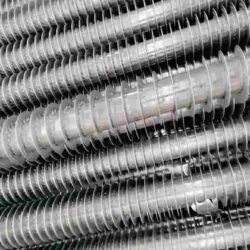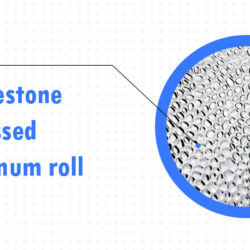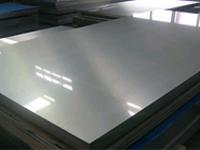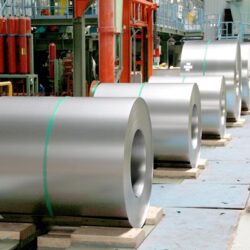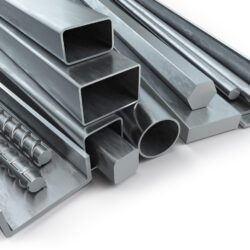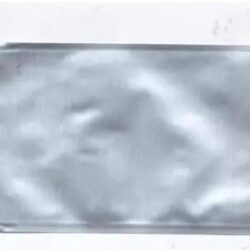Aluminium foil (or aluminum foil in North America; often informally called tin foil) is aluminium prepared in thin metal leaves with a thickness less than 0.2 mm (7.9 mils); thinner gauges down to 6 micrometres (0.24 mils) are also commonly used. In the United States, foils are commonly measured in thousandths of an inch or mils. Standard household foil is typically 0.016 mm (0.63 mils) thick, and heavy duty household foil is typically 0.024 mm (0.94 mils). The foil is pliable, and can be readily bent or wrapped around objects. Thin foils are fragile and are sometimes laminated with other materials such as plastics or paper to make them stronger and more useful.
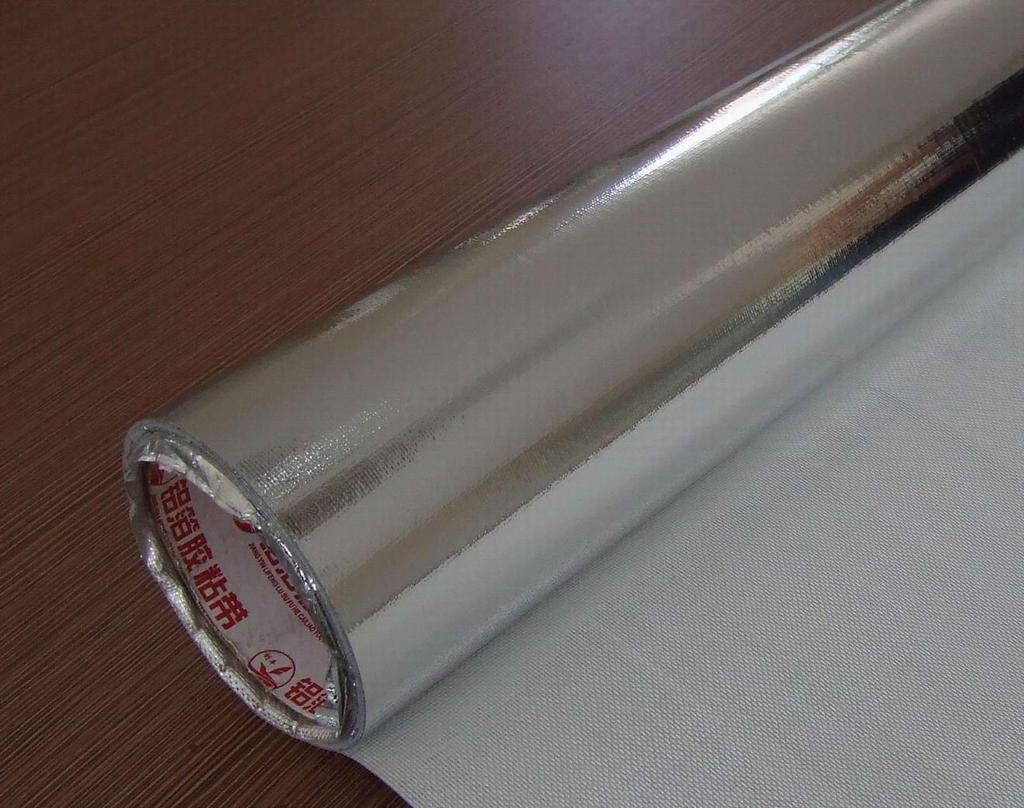
How aluminum foil is made
Aluminum foil is produced by rolling aluminum slabs cast from molten aluminum in a rolling mill to the desired thickness. To maintain a constant thickness, a technician monitors the rolling mill sensors to ensure the pressure on the slab is correct. Sensors are able to tell the technician if the pressure is too great or not enough and then the technician can adjust the rollers to apply more or less pressure. It is then coiled and sent to the cold rolling mill. To avoid breakage because of the thinness, the foil is doubled in the cold rolling mill and the rolled to the desired thickness. Aluminum foil provides a complete barrier to light, oxygen, moisture and bacteria. For this reason, foil is used extensively in food and pharmaceutical packaging. It is also used to make aseptic packaging that enables storage of perishable goods without refrigeration.
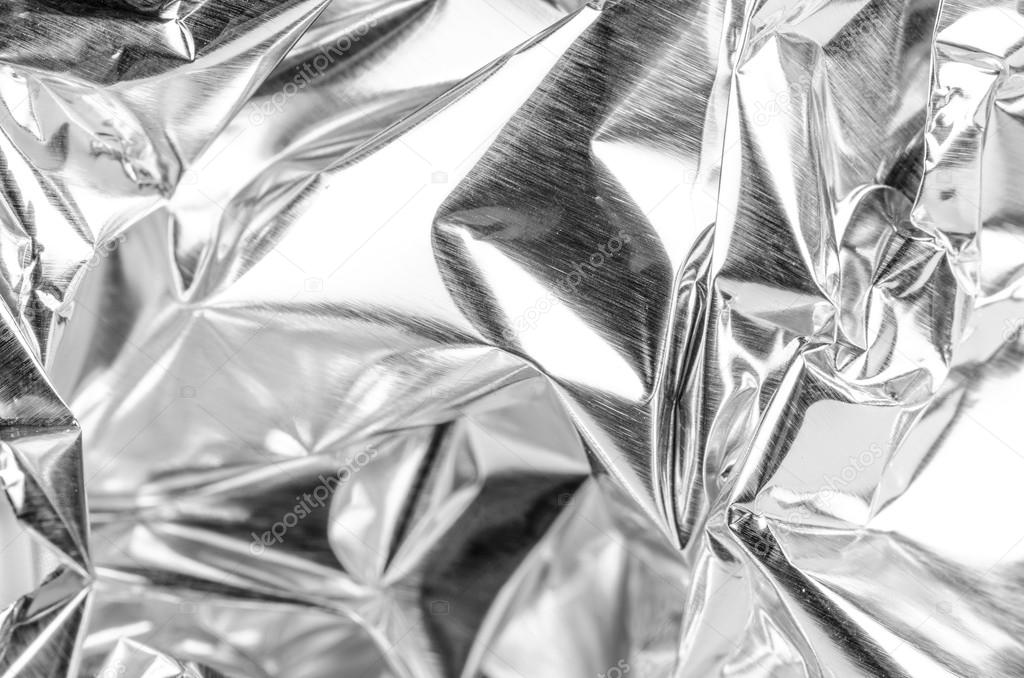
The History of Aluminum Foil
Before aluminium foil
Foil made from a thin leaf of tin was commercially available before its aluminium counterpart. Tin foil was marketed commercially from the late nineteenth into the early twentieth century. The term “tin foil” survives in the English language as a term for the newer aluminium foil. Tin foil is less malleable than aluminium foil and tends to give a slight tin taste to food wrapped in it. Tin foil has been supplanted by aluminium and other materials for wrapping food.
The first audio recordings on phonograph cylinders were made on tin foil.
The first aluminium foil
Tin was first replaced by aluminium in 1910, when the first aluminium foil rolling plant, “Dr. Lauber, Neher & Cie.”was opened in Emmishofen, Switzerland. The plant, owned by J.G. Neher & Sons, the aluminium manufacturers, started in 1886 in Schaffhausen, Switzerland, at the foot of the Rhine Falls, capturing the falls’ energy to process aluminium. Neher’s sons, together with Dr. Lauber, discovered the endless rolling process and the use of aluminium foil as a protective barrier in December 1907.
In 1911, Bern-based Tobler began wrapping its chocolate bars in aluminium foil, including the unique triangular chocolate bar, Toblerone. By 1912, aluminium foil was being used by Maggi (today a Nestlé brand) to pack soups and stock cubes.
The first use of foil in the United States was in 1913 for wrapping Life Savers, candy bars, and gum. Processes evolved over time to include the use of print, colour, lacquer, laminate and the embossing of the aluminium.
The first commercial use: packaging Life Savers into their now world-famous shiny metal tube. The demand for aluminum foil skyrocketed during World War II. Early military applications included the use of foil strips, dropped from bombers, to confuse and misguide radar tracking systems. Aluminum foil was so vital to the defense effort that families were encouraged to save strips of foil. In many towns, the collected foil balls could be exchanged for free entry to a movie theater. One of the most innovative uses of aluminum foil came in the early 1960s. The aluminum Christmas tree debuted—complete with foil-covered branches and decorations.
Properties
Aluminium foils thicker than 25 μm (1 mil) are impermeable to oxygen and water. Foils thinner than this become slightly permeable due to minute pinholes caused by the production process.
Aluminium foil has a shiny side and a matte side. The shiny side is produced when the aluminium is rolled during the final pass. It is difficult to produce rollers with a gap fine enough to cope with the foil gauge, therefore, for the final pass, two sheets are rolled at the same time, doubling the thickness of the gauge at entry to the rollers. When the sheets are later separated, the inside surface is dull, and the outside surface is shiny. This difference in the finish has led to the perception that favouring a side has an effect when cooking. While many believe (wrongly) that the different properties keep heat out when wrapped with the shiny finish facing out, and keep heat in with the shiny finish facing inwards, the actual difference is imperceptible without instrumentation. Increased reflectivity decreases both absorption and emission of radiation. Foil may have a non-stick coating on only one side.[ The reflectivity of bright aluminium foil is 88% while dull embossed foil is about 80%
Mechanical properties of aluminum foil
The most important (mechanical) properties for films and tapes are the tensile strength, the yield strength and the elongation. These properties are important both for single-layer foils (ie, for example, pure aluminum foils) and for laminates.
In the case of laminates, adhesion is also important. The bonded adhesion is used to indicate how well the individual layers adhere to each other. Depending on the application, characteristics such as degree of gloss, water permeability and vapor permeability, or the degree of emissivity also play a role.
Aluminumfoils are available in various alloys
Aluminum foil is characterized by its alloy and the material state. Pure aluminum (i.e., 100%) does not exist on the market, but other metals and semimetals are bonded to the aluminum in an alloy. These are mainly chromium, copper, iron, magnesium, manganese, silicon, titanium and zinc.
These elements are often only added in fractions of one percent, but can strongly influence the properties of the aluminum. For this reason, different alloys are preferred for different applications.
Alloys are given in various notations. International EN-AW notation (eg EN-AW 1050 with at least 99.5% aluminum or EN-AW 8079) is used internationally. In Germany, sometimes the old DIN notation is used (eg AlMg3 for EN-AW 5754).
The alloys differ only insignificantly in price, but some alloys are produced less frequently than others. Such aluminum alloys are therefore more difficult to obtain, especially when a small quantity is demanded.
Aluminum foils from soft to hard, and degreased
In addition to the alloy, the material temper also has an influence on the properties of the aluminum. A distinction is made here between “soft” and “hard” aluminum, as well as the intermediate forms “quarter hard”, “semi hard” and “three-quarter hard”.
After (several times) rolling operations, the aluminum is in a hard condition. If the rolls are then heated for several hours in an oven, the material is transformed to a soft state. In addition, rolling oil residues also evaporate on the film. This is particularly important for the production of laminates, because oil residue is degrading or preventing the adhesion of the adhesive. For laminates, mainly soft aluminum is used. This also applies to coatings – most of the lacquers also do not adhere to films with oil residues.
If, however, aluminum foil is to be used in the “hard” state for laminates and lacquered films, the films can also be degreased chemically. The aluminum foil is “washed” by a bath in chemical substances instead of heating the foil in the oven.
Composite films made of aluminum with PET, PE, paper and other materials
Multilayer films are referred to as laminates or composite films. These are multilayer films made of different materials, the individual layers being glued together.
Golden Aluminum foil with paper
Multi-layer foil of gold-printed aluminum foil with paper
A laminate of two films is called “duplex” (eg aluminum + PE), a laminate of three layers is also called “triplex” (e.g. PET + aluminum + PE). Laminates with more layers are also possible, “Aluminum 7 μ + PE 15 g + kraft paper 50 g / m² + sheeting 6 mm x 12 mm + flame retardant PE 25 g”. This material can be used several times (e.g. two PE films in a sandwich with aluminum, i.e. PE + Alu + PE).
The process of gluing the films is called “laminating” or “lamination“. When a plastic material is applied to a carrier web in liquid form, it can itself serve as an adhesive for a further film. For this purpose, a PE granulate is usually heated and applied between the two foils to be bonded. One then speaks of a “PE-lamination“. When the PE is applied to only one carrier (i.e. outside the finished film), it is referred to as “coating” or “extruding“.
Dimensions of aluminum foil and roll design
When purchasing aluminum foil and strips, the thickness and width of the foil should be indicated. For aluminum foils the thickness will be specified in micrometers (μm = 1/1000 millimeters). The unit millimeter (mm) is also used for thicker aluminum strips. The width is generally expressed in millimeters, but also centimeters (cm) or meters (m) are common.
Stacked aluminum strips
Aluminum strips
In addition to the thickness and the width, the roll presentation/format is also important. Rolling is defined as the weight, the reel outside diameter (OD) and the lineal meter or length per reel. These are frequently limited by the further processing steps, for example, a further processing machine can only pick up rollers with a certain maximum weight or maximum outer diameter.
In addition, there are different core materials. For aluminum reels of several hundred kilograms steel cores with an inside diameter (ID) of 150 mm or 152 mm are mainly used. For small reels with an internal diameter of 38 mm, 40 mm, 70 mm or 76 mm are also used cardboard cores. Laminates are often wound on cardboard cores with an inner diameter of 76 mm. Cores made of aluminum or plastic are more rarely used.
Aluminum foil as rolls
Alfipa supplies aluminum both on large mother reels of several hundred kilograms, as well as “small reels” with few running meters. In principle, aluminum foil is more expensive on small reels (i.e. with a few meters and light weight) than aluminum foil on large reels (with many meters and high weight), because the more frequent reels changes during production mean that the production costs are much higher. This applies to both aluminum foil and composite film.
When ordering smaller quantities, aluminum foil is mostly taken from a mother reel and cut to the desired width and length – which means a further step in comparison to the material on the mother reel, which makes the material more expensive.
Aluminum formats and aluminum sheets
For formats (also known as aluminum sheets for thicker material), applies the same as for small reels. Formats are generally cut from an aluminum foil or from an aluminum strip, and are therefore more expensive than when the same material is used as a film or tape. In addition, the shipping is often slightly more expensive, especially if it is only a few formats.
